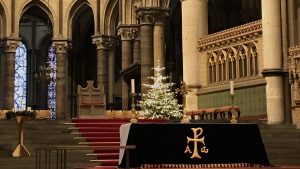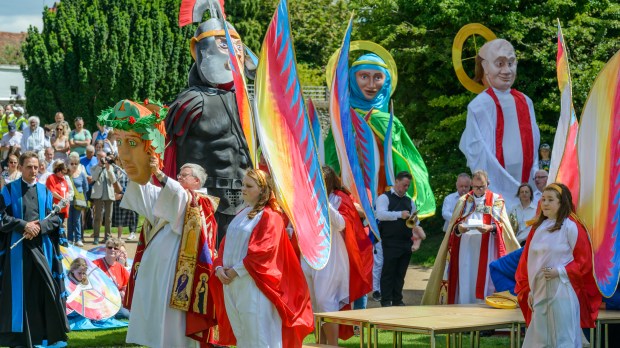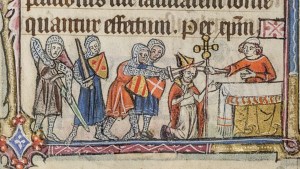Lenten Campaign 2025
This content is free of charge, as are all our articles.
Support us with a donation that is tax-deductible and enable us to continue to reach millions of readers.
English street festivals can take many forms. The most infamous of them has long had a reputation for its anti-Catholic bias, being held in the town of Lewes, south of London, where a number of Protestants were burnt at the stake five centuries ago. More recently the thirst for revenge has been restricted to the incineration of a single papal effigy.
The Alban Pilgrimage
On the other side of London is the Alban Pilgrimage, which takes place on June 25 in the eponymous municipality of St. Albans. For the past two months the puppets, measuring up to 12 feet, have been on display at the cathedral. Soon they will be out on the street, doing what this town should be famous for. The puppet procession may not be as old or as rowdy as the Lewes crowd-puller, but the man it commemorates is venerated more widely.
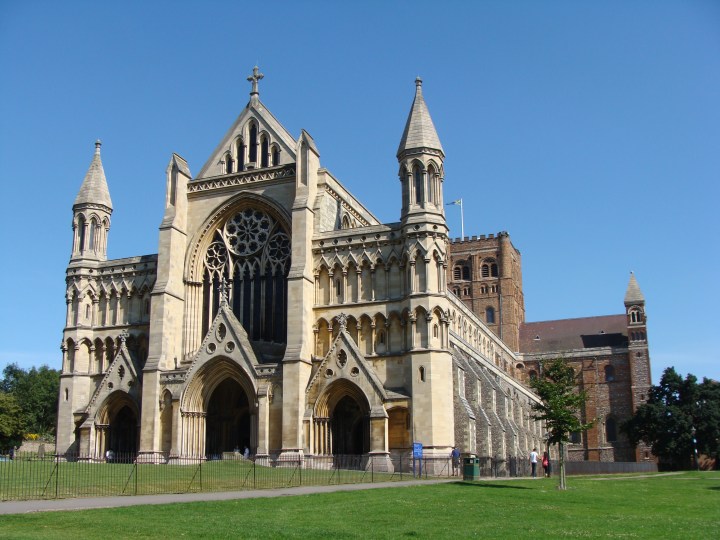
St. Alban has given his name to more than this London commuter community. He is commemorated in locations as close as France and as distant as New Zealand. He is Britain’s very first Christian martyr, and just about every Christian denomination gets behind him. These days, all seem to agree that his feast day is June 22, close to the longest day of the year. There is less consensus about the year in which he was martyred. Historians and hagiographers have been battling it out for centuries. The conclusion is a broad range, somewhere between 209 and 313.
Mysterious life and miraculous death
This is just the beginning of the confusion about St. Alban. Little is certain about him, except where he died. All agree that he was beheaded in the town that now bears his name. Most believe the execution was somewhere near the magnificent abbey, which has been rebuilt many times.
He may have been a Roman soldier, and he undoubtedly paid the ultimate price for taking the place of a Christian priest at a time of persecution. After giving Alban a sound scourging, the Roman official in charge concluded there was no more entertainment to be had from a man whose faith shrugged off pain so effortlessly. The designated executioner spoiled the next part of the show by becoming a Christian on the spot. The replacement swordsman managed to behead the saint-in-waiting but was unable to enjoy the spectacle as his eyes popped out, literally.
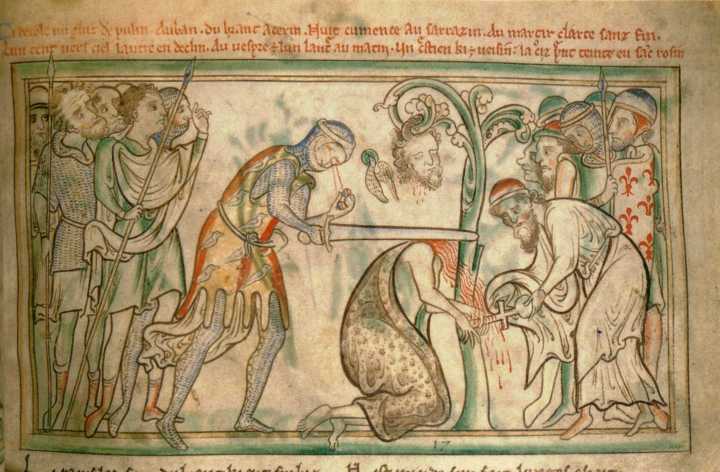
The legacy
More miracles followed where Alban’s head had rolled. From that hallowed soil grew the largest Benedictine monastery in England. The would-be monk Nicholas Breakspear, who went to school in the town, was turned down by his local monastery but ended up in Rome as Pope Adrian IV (1154-59), England’s only pontiff. By coincidence he was also Bishop of Albano, in Italy. The definitive medieval historian Matthew Paris managed to join St. Albans Abbey as a monk, where he wrote his enjoyably gossipy chronicles.
The claim that all Christians have on St. Alban nowadays didn’t apply during the cultural revolution know as the Protestant Reformation. No saint was safe then, nor during the Puritan popery hunts that came later. St. Alban’s shrine was taken apart by zealots and treasure hunters. The destruction was, at least, less vindictive than the treatment of St. Thomas of Canterbury, ground to dust by the Reformers. King Henry had a special grievance with saints called Thomas after his deadly altercation with St. Thomas More.
St. Alban’s shrine was reinstated and is now the focal point of the Alban Pilgrimage, but the abbey was never returned to the Catholic Church. The Abbey – re-designated as a cathedral – still doesn’t have many saintly statues on display. The group that’s there has been turned into a model of ecumenism. In addition to St. Alban himself, there is a Catholic martyr of the Reformation (also called Alban) as well as St. Oscar Romero. The Church of England has managed to squeeze in a royal Russian Orthodox nun murdered by the Bolsheviks, along with a Lutheran victim of the Nazis. All statues are splendidly colorful, including that rare item of statuary: an Anglican martyr. Burning was the fate for this baker during the reign of Queen (Bloody) Mary. The site of his execution never changed its name from “Romeland” — apparently not a reference to the Eternal City.
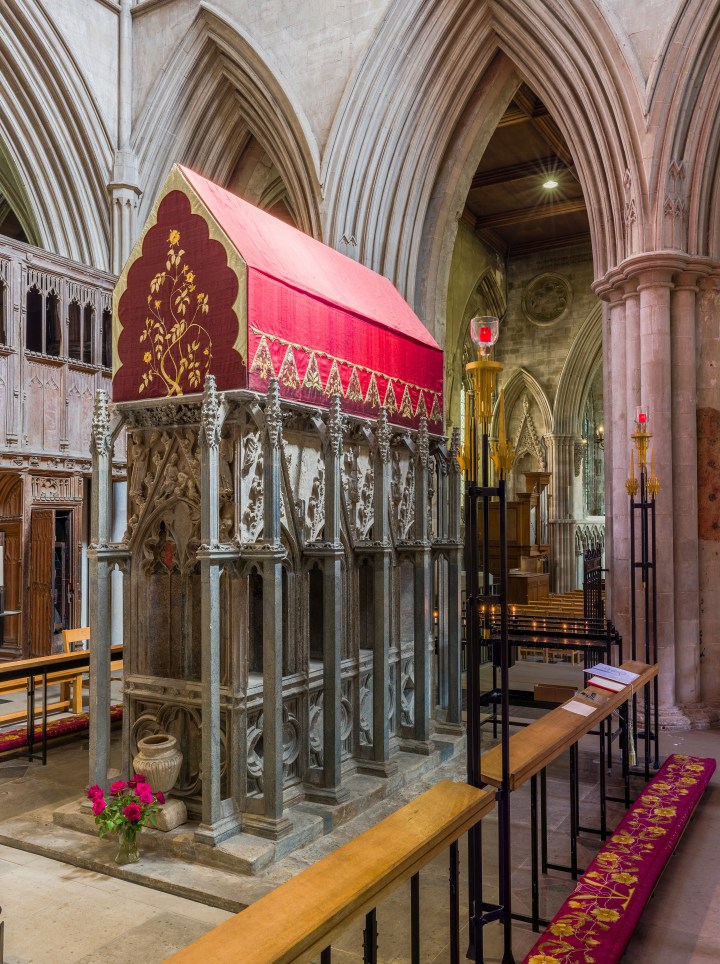
It’s hard to look at the modern St. Albans and imagine the Roman metropolis of Verulamiam. The fearsome Queen Boudica considered it offensive enough to burn it to the ground. She was no defender of Christians, who hadn’t reached Britain in AD 61. Once they proliferated, the Romans started persecuting.
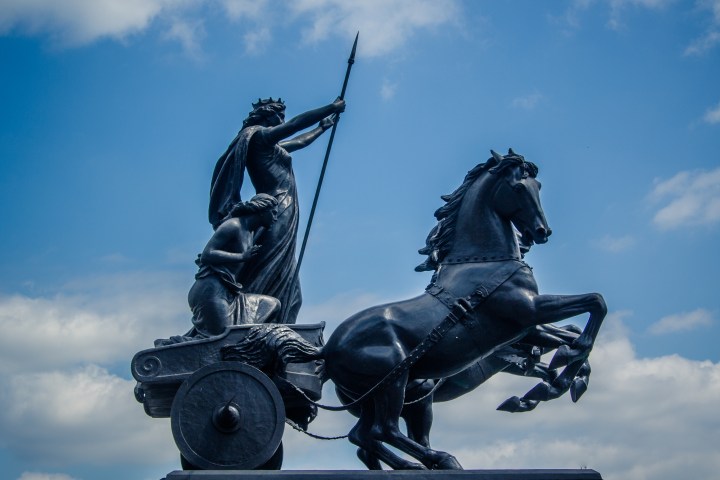
Despite Alban being Roman, he became Britain’s first martyr for the Christian faith. England’s patron saint remains a man who was even less indigenous to the British Isles. St. George was probably from what is now called Turkey and never made it nearly as far west as the distant outpost of Britannia.
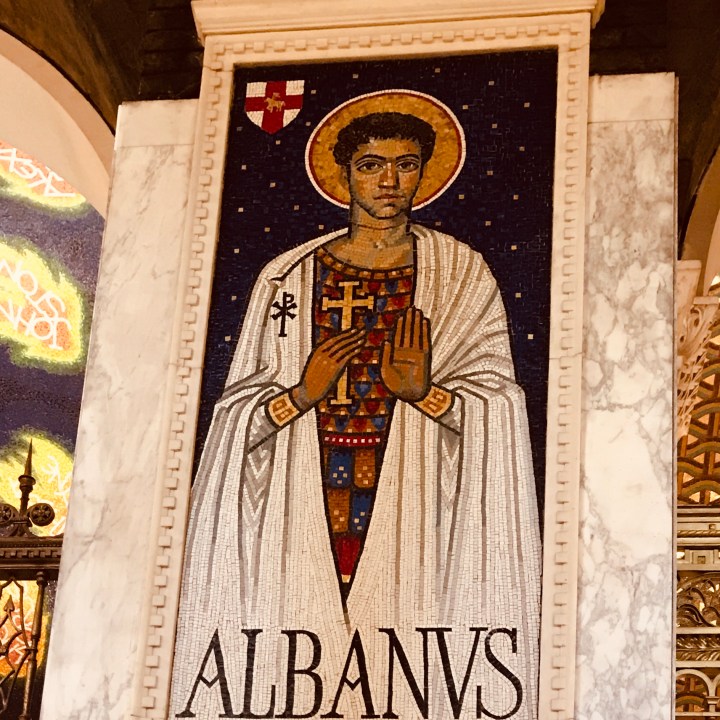
The two saints died far away from each, at roughly the same time – if we accept the 305 Roman purges as the correct date. We don’t know anything about the two martyrs’ appearance, but St. Alban the processional puppet has a quintessentially “English” look about him, as do numerous stained-glass windows.
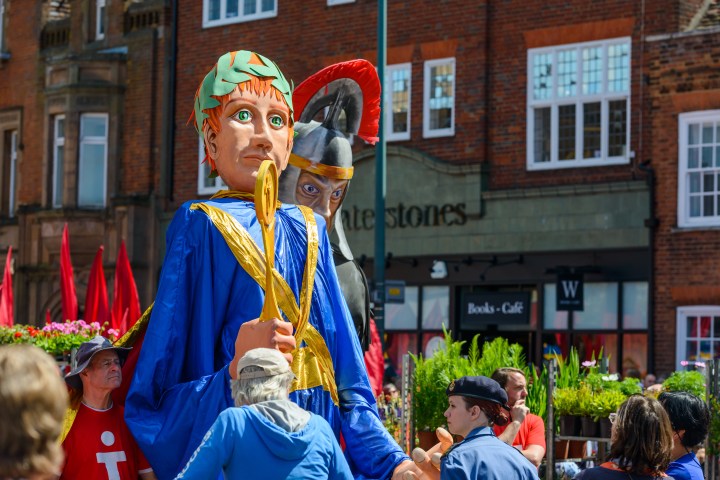
One church that has taken a less parochial approach is the center of English Catholicism, Westminster Cathedral. A prominent wall mosaic of the saint suggests some African ancestry, which would be another first for an English saint, but not for a Roman.
